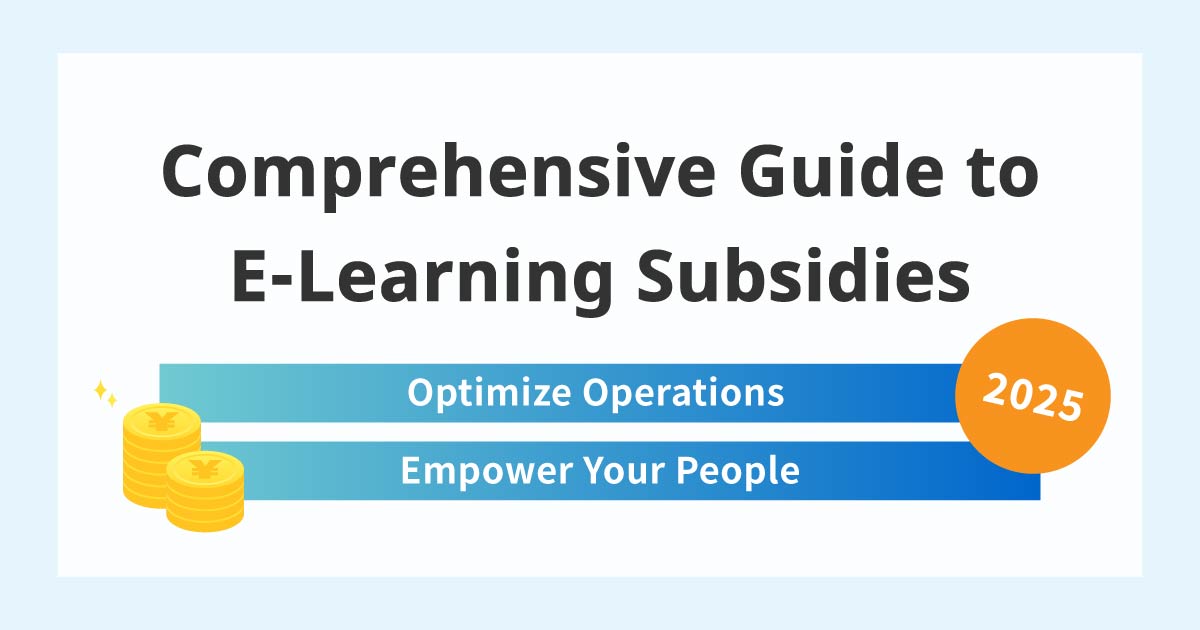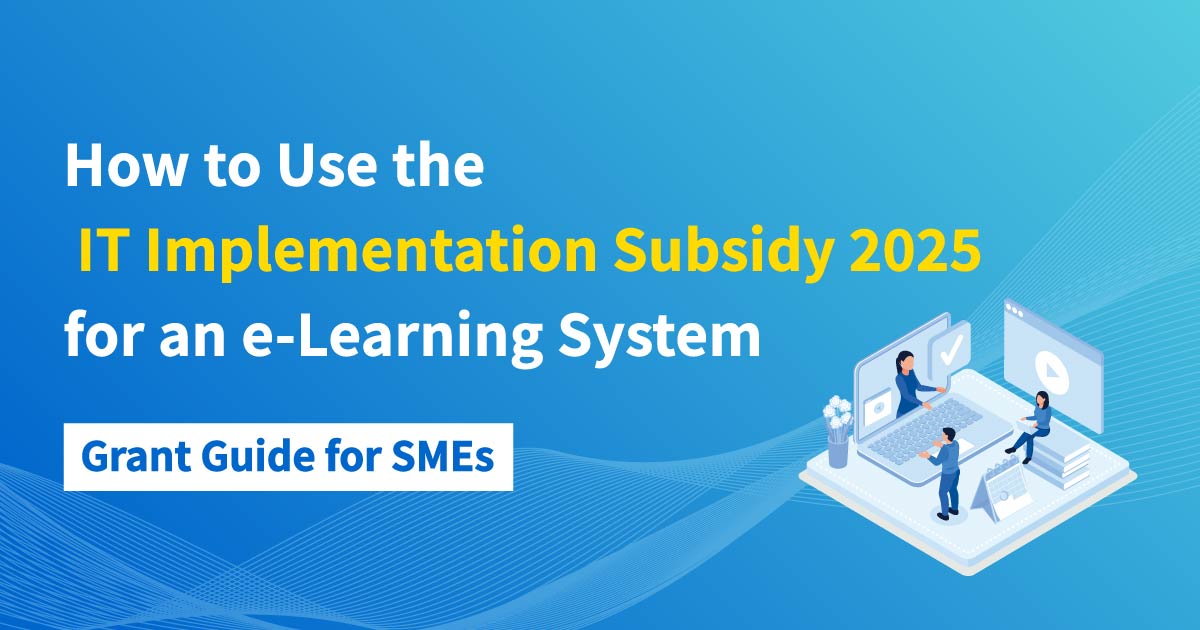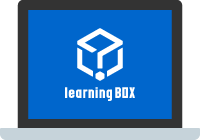7 Disadvantages to be aware of when introducing e-Learning│Introduction of countermeasures and case studies

E-learning is being introduced by companies in a variety of industries and sectors as an effective method for human resource development and employee training. While the focus tends to be on the benefits of e-learning, such as reduced training costs and more efficient course management, there are also some points to keep in mind when introducing e-learning.
In this issue, we will provide a thorough explanation of the disadvantages of using e-learning for in-house training, tips for maximizing the effects of its introduction, and case studies of companies. For each demerit, we will also introduce countermeasures, so please take a look.
Disadvantages and cautions to be aware of in e-learning
| Disadvantages / Cautions | countermeasure |
|---|---|
| Easily struggles to manage learner motivation | -Display of ranking of top performers -Badges and certificates based on learning progress -Preparation of teaching materials utilizing video and animation -Creation of short educational materials that are easy to use in your spare time |
| It is also essential to improve the environment on the learner's side. | -Multi-device support, including smartphones and tablet devices -Development of a system for downloading materials and teaching aids |
| Not suited for practical learning with hands-on experience. | -Combination of e-learning training and training with practical training |
| Certain knowledge is required for implementation and production. | -Use of LMS providers' implementation support and agency services -Selecting an LMS with intuitive operation |
| Difficulty in exchanging questions and answers, etc. | -Establishment of a space for anonymous posts |
| Difficult for learners to communicate with each other | -Combined with group training based on training content and objectives -Introduction of LMS with full social functions |
| Initial and monthly fees are required. | -Use of a free LMS |
While e-learning has advantages such as efficient learner progress management, individualized and flexible program construction, and equal learning opportunities, there are also some points to be considered when introducing e-learning. This section provides information on the disadvantages of using e-Learning for corporate training and countermeasures.
Easily struggles to manage learner motivation
The challenge with e-learning is that it requires learners to be self-motivated to learn, as it is less coercive than group training or on-the-job training. While e-learning has the advantage of allowing learners to learn anytime, anywhere, there is a risk of inducing slacking off or poor attitudes toward the course.
It would be good to provide a system to visualize learning status, grades, and level of proficiency, and to help learners feel a sense of personal growth and maintain motivation.
It is also effective to incorporate gamification elements to make learning more enjoyable. Specific examples include the display of rankings of top performers and the creation of badges and certificates based on learning progress and comprehension.
It is also essential to improve the environment on the learner's side.
With cloud-based e-learning, there is a need for the administrator and learners to prepare their own learning terminals and Internet environment.
LMS (Learning Management System), which can be used not only on PCs but also on smartphones and tablets, will lower the hurdle to take a course. It can create and distribute learning materials, centrally manage learning histories, provide feedback, and so on.
In addition, if a system for downloading materials and teaching materials is in place, it will make it easier to study in an offline environment. This will help improve learning efficiency by making effective use of commuting time, such as on trains.
Not suited for practical learning with hands-on experience.
Because e-learning tends to focus on classroom input, it is difficult to incorporate training content that involves practical skills and cooperation among learners. Depending on the capabilities required by your company, it is recommended that you consider introducing training that involves practical training such as role-playing, in addition to online lectures.
Certain knowledge is required for implementation and production.
In-house training using e-learning requires knowledge of how to select and use an LMS, as well as how to create questions. Preparing materials from scratch can be more time-consuming and costly than expected.
In cases where your company does not have the know-how, consider using the services of an LMS provider who can provide implementation support and create learning content on your behalf. This will enable you to provide customized content tailored to your organization and individuals. If you are producing your own educational materials, it is also important to select an LMS that is easy and intuitive to operate.
Difficulty in exchanging questions and answers, etc.
Compared to group training, e-learning makes it difficult for instructors and learners to communicate with each other in real time. Therefore, if countermeasures are not taken, questions about learning content or the system cannot be answered promptly, leading to a deterioration of training efficiency and a decrease in learner motivation.
Set up a FAQ, a dedicated contact point, or an internal social networking site where people can write anonymously and have their questions answered immediately. If questions from learners can be handled online, it will make e-learning more accessible to companies with teleworking.
Difficult for learners to communicate with each other
E-learning tends to make it difficult for learners to communicate with each other because each learner takes the course at his/her own time. For example, in the case of training that also serves the role of networking and information exchange, such as training for new employees or joint training with other companies, group training may be more suitable in some cases.
It is important to use both e-learning and group training depending on the content and purpose of the training. It is also a good idea to implement an LMS with full social functions so that learners can share their progress and learning methods with each other.
Initial and monthly fees are required.
Compared to group training, e-learning reduces the costs required to prepare and distribute paper materials and to coordinate schedules, but may also require LMS installation costs and monthly fees.
When implementing e-Learning to reduce training costs, it is recommended to choose a system that is available free of charge. However, free LMS may have restrictions on the number of people who can use it, the period of time it can be used, and its functions, so be sure to check in advance.
Back to ContentsKey Points to Maximize e-Learning Implementation Effectiveness

Although e-Learning has many advantages, there is a possibility that the expected effects may not be achieved depending on how it is utilized. Here, we will explain the points to maximize the effects of e-Learning implementation based on the disadvantages and points to be aware of that we have just mentioned.
Establish rules regarding attendance.
To increase the effectiveness of e-learning, it is necessary to establish a system that does not disadvantage learners. For example, if the course is mandatory, set rules such as "the course must be conducted during working hours" and "late-night work allowances must be paid if the course is conducted after 10:00 p.m.". If the training is optional, it is also important for the company to prepare and disseminate rules such as "not having to take the training will not affect your personnel evaluation.
Provide adequate preparation time before operations begin.
Preparation prior to the start of operation is important to prevent e-learning introduction failures, such as low course participation rates and insufficient content. Specifically, sufficient time should be set aside to clarify the purpose of the introduction, ensure the quality of the materials, and measure the effectiveness of the system through test operations.
Back to ContentsExamples of e-learning disadvantages and precautions that are prevented or eliminated

Next, we will introduce some examples of e-learning implementation using an LMS, focusing on how to prevent or eliminate disadvantages and cautions, etc. Please refer to these examples when reviewing how to implement in-house training through e-learning.
UUUM Corporation
UUUM Corporation was facing barriers in accomplishing its important mission of ensuring compliance. Specifically, group training could not be held due to the new coronavirus, and the cost of training venues for several hundred people and transportation costs for participants were prohibitive.
In response, the company introduced the e-learning system "learningBOX" for compliance training for influencers. To prevent learners from getting bored, the system provides compact video materials that are easy to watch all the way through, helping them to consolidate their knowledge. The intuitive operability of the system also made it difficult to discourage learners from using the system.
In addition, since there are no venue or participant transportation costs, the program has succeeded in significantly reducing costs compared to traditional face-to-face training. We have also been able to achieve our objectives of delivering necessary information to learners, convincing them, and encouraging them to change their behavior.
Suzuka University of Medical Science
Suzuka University of Medical Science Educational Corporation was facing challenges in improving students' academic performance, retention, and leave of absence/withdrawal. The university urgently needed to create e-learning contents that would motivate students to learn and enable them to work on their own initiative.
In response, the university introduced "learningBOX" to create an environment in which students can efficiently strengthen their input through repetitive learning. Questions of a wide range of difficulty levels and formats have been created and are being used as a weapon to improve the "straight pass rate" for national and other examinations. When we introduced this system ahead of others in certain departments, we were able to reduce to zero the number of students who were caught in retesting.
Another key point is that there is no stress involved in logging in and operating the system, which does not hinder student motivation. In addition, the reminder e-mail function has increased the response rate to class questionnaires, helping to improve the quality of lectures.
Back to ContentsBe aware of the disadvantages of e-learning to optimize in-house training.
In this issue, we have introduced the disadvantages, countermeasures, and case studies of e-learning, and have discussed the ideal way to use e-learning for internal training to cover the disadvantages while making the most of the advantages. For more information, please contact us.
If you are considering bringing your training in-house, please contact us atlearningBOX LearningBOX is an LMS that provides all the functions necessary to implement e-learning, such as creating and distributing teaching materials, grading, and managing students.
We also offer a free plan that allows you to use each function for 10 accounts for free and indefinitely. Free Plan.
learningBOX ONWith the "Training Content" feature, you can also add company-required training content to the learningBOX. By combining harassment training, information security training, compliance training, etc., you can easily design your own original training program.
▼You may also like:
Back to Contents


-
Discover rich featuresService Guide
-
Feel free to contact usGet in Touch
-
Try our Free PlanTry Free Plan















